WARNING: Below are some fairly graphic descriptions of what I saw. If you'd rather not read through this, I'd recommend you skip past the next several paragraphs and photos.
On our second day in Phnom Penh we went down to Tuol Sleng, a former high school used as the notorious Security Prison 21 (S-21) by the Kmer Rouge.
From 1975 to 1979, an estimated 17,000 people were imprisoned at Tuol Sleng (some estimates suggest a number as high as 20,000, although the real number is unknown). At any one time, the prison held between 1,000–1,500 prisoners. They were repeatedly tortured and coerced into naming family members and close associates, who were in turn arrested, tortured and killed. In the early months of S-21's existence, most of the victims were from the previous Lon Nol regime and included soldiers, government officials, as well as academics, doctors, teachers, students, factory workers, monks, engineers, etc. Later, the party leadership's paranoia turned on its own ranks and purges throughout the country saw thousands of party activists and their families brought to Tuol Sleng and murdered.
Most prisoners at S-21 were held there for two to three months. However, several high-ranking Khmer Rouge cadres were held longer. Within two or three days after they were brought to S-21, all prisoners were taken for interrogation. The torture system at Tuol Sleng was designed to make prisoners confess to whatever crimes they were charged with by their captors. Prisoners were routinely beaten and tortured with electric shocks, searing hot metal instruments and hanging, as well as through the use of various other devices. Some prisoners were cut with knives or suffocated with plastic bags. Other methods for generating confessions included pulling out fingernails while pouring alcohol on the wounds, holding prisoners’ heads under water, and the use of the waterboarding technique. Females were sometimes raped by the interrogators, even though sexual abuse was against Democratic Kampuchea (DK) policy. The perpetrators who were found out were executed. Although many prisoners died from this kind of abuse, killing them outright was discouraged, since the Khmer Rouge needed their confessions. The "Medical Unit" at Tuol Sleng, however, did kill at least 100 prisoners by bleeding them to death.
Out of an estimated 17,000 people imprisoned at Tuol Sleng, there were only seven known survivors. As of September 2011, only three of them are thought to be still alive.
We spent about 2-1/2 hours there, walking through the many buildings. Becauseall prisoners were photographed and required to give detailed autobiographies, much of what we saw (and read) were those. Chilling. And so, so sad. It is still virtually impossible to believe that humans can treat other humans -- their own countrymen, no less -- in such a way. But they did.
The day after visiting TS, we took a day off and each explored the city separately, so that we could cruise around at our own pace and spend a quiet day.
On day 4, we hired a tuk-tuk to take us out to Choeung Ek Museum -- aka the Killing Fields Museum. As we rode out, we laughed and talked and took pictures (as we tend to do), not yet being able to fathom the horror we were about to see.
Then we arrived.
This "museum" is actually a large outdoor field, where prisoners from many of the inner-city "camps" (including Tuol Sleng) were taken to be executed (but often tortured more first). The tour is done with headphones & personal audio devices, so that each person can listen to the description of each exhibit on their own and in their own time. We found this to be a brilliant way to experience this very sobering place. Listening to the descriptions (rather than reading) not only allows one to walk and look while taking in the extensive information, it also means that the entire place is silent while each person is having their own quiet experience.
Most all the buildings on this site were constructed for the exhibit -- after the killing was over. So there's not much to show you in terms of photos. I did, however, take pics of the signs at each "station" so that you can read a bit of some of the descriptions to which I was able to listen. I have no idea if you'll be able to enlarge these and read them, but I'll attach (some of) them, nonetheless.
It is estimated that the death toll during the Kmer Rouge regime was somewhere between 2 and 2.5 million (out a population of 8 million). This includes deaths by execution, disease, and starvation -- all related to detainment and torture.
To save on ammunitions, the executions were often carried out using poison, spades or sharpened bamboo sticks. In some cases the children and infants of adult victims were killed by having their heads bashed against the trunks of Chankin trees. The rationale was "to stop them growing up and taking revenge for their parents' deaths. This was perhaps the hardest and most horrifying thing I saw in all.
In 1979, communist Vietnam invaded Democratic Kampuchea (yes that's what the KR called their government) and toppled the Khmer Rouge regime.
Nearly impossible to believe is the fact that Pol Pot, the man who pretty much single-handedly began and led the Kmer Rouge, was not ever convicted. In fact, he was able to live his life -- with his 3rd wife, children, and grandchildren -- until he was 72 years old. From 1979 to 1997, he and a remnant of the old Khmer Rouge operated near the border of Cambodia and Thailand, where they clung to power, with nominal United Nations recognition as the rightful government of Cambodia. In 1996, he was put under "house arrest" and died in 1998 at the age of 72. Unthinkable.
The ride back to town was mostly silent. That was Friday afternoon.
Friday evening we had a nice dinner in our hotel then were invited to go out to a party of sorts with a couple friends, Katie (who I met in Luang Prabang) & her roommate, Melissa. We thought that might be a great way to "shake off" the gloominess of the afternoon at Choeun Ek. So we got ourselves as "gussied up" as we could, met at the hotel then headed out....
Katie & Melissa (above)
The party was actually an opening of a restaurant/bar. We arrived to find a hollywood style background which was meant for celebrity-style photo ops. So we posed..... Silly girls.
And then there was Siem Reap and the temples of Angkor.There are almost no words to describe.
On Sat, 19 Jan, we boarded yet another bus (almost missed it... but that's a story for another time) and did the 6-1/2 hour trip up to Siem Reap.Siem Reap is more a big town (about the size of Boulder?) than a city, and it practically exists solely for the tourists who are there to explore the massive temple grounds. There are, quite literally, HUNDREDS of guesthouses & restaurants (many of them quite good!), thousands of tuk-tuk and moto drivers, every service you can possibly imagine, and hoards of people. Tourists come from everywhere around the globe, with the highest single percentage from Korea (Chinese tourists come in a close second). The town can feel a bit overwhelming and it's easy to feel almost "assaulted" by all the tuk-tuk drivers -- who ask you if you want a ride about every 10 steps -- and vendors (of all things). But it's a nice place to see/be in any case.
As I was taken by tuk-tuk to my guesthouse I snapped a few pics....
And then took more once I arrived and started to walk around....
I stayed in a wonderful guesthouse, Babel, that was set enough outside of town to be quiet and restful. It was located on a street known by travelers as "backpacker row." Even though the place was pretty inexpensive (my room was $15, including breakfast!) the service was stellar. Owned by a Norwegian woman (on the left in one of the pics below), all the staff were Cambodian. They had such an attention to detail and would bend over backwards to help with anything I might need. I so enjoyed going back there at the end of a day of walking/exploring in the heat.
The breakfast area (above)
One of my favorite guys on the staff (above)
Leah, Joanna, & I spent our first day in Siem Reap just walking around town, exploring and getting a lay of the land. That evening we rented bikes for the next day ($1/day) so that we could leave at 5:30am to be at Angkor Wat for sunrise.We stayed out there for quite a while longer after sunrise to walk, sit, meditate, and take more pics....
After a couple hours at Angkor Wat, we mounted our bikes and began riding toward Angkor Thom -- about 3 miles away. As we approached what we thought was the "main" entrance (below), we parked our bikes and through to the other side. Then realized that it was another mile or so before the actual ruins of Angkor Thom. So we jumped back on our bikes and rode on.
When we got to the other side, we turned around to see some tourists arriving on the backs of elephants. Oh my.... quite a grand entrance (and probably wasn't cheap!), but I don't think this is a kind way to treat/use elephants. Don't like seeing it. (and, frankly, it doesn't really look very comfortable, either)
And then we reached Angkor Thom....
Notice in the second photo (above) the face carved in the stone. These faces were the signature feature of Angkor Thom. They were absolutely amazing.
I took a handful of pics there and then, unfortunately, my camera ran out of battery. Rats. So I decided to head back to town (by this time, it was about 10:00a), recharge my batteries (the camera's and mine:), have breakfast, and possibly head back out to the temples later. It took me a good 40mins to get back to the hotel on my one-speed bike, and by the time I got there, out of the heat, I wasn't inclined to ride back. Instead, I used the bike to tool all around town and check out some of the shops and bookstores and then I just relaxed.
Since I'd already purchased a 3-day pass ($40... not cheap!),I figured I'd spend the entire next day at the temples. That evening I made sure my camera was fully charged and hired a tuk-tuk driver to pick me up early the next day, and off I went.
Jom (sp?) was my tuk tuk driver's name... a young guy (early 20's?) who was studying English literature, believe it or not. He spoke very good English, as you can imagine, and was the perfect person to take me around the temples. He wasn't a "guide" per say -- he would just wait for me at the tuk tuk while I took myself onto all the various temple grounds -- but he did have a lot of knowledge/info about the temples and shared much of that with me while we were driving from place to place.
Several times when I returned to the tuk tuk after visiting a temple, I found Jom napping...
It's impossible to convey the enormity of the this site. But to give you an idea: Jom & managed to get around to about 80% of the temples (I had already seen Angkor Wat and Angkor Thom), stopping at each one for 20-45mins and it took us eaily about 6 hours. Truly amazing. I can see why it's been named the 8th Wonder of the World.
It was hard to NOT take tons and tons of photos, but I'll pick only one ton to show you here....
DISCLAIMER: I shot these with my Panasonic Lumix point-and-shoot and then, for the sake of this blog, reduced the size of the files so they'd load more quickly/easily (don't worry, I retained the original copies!). So the quality may be lacking here...
that's me in there (above)....
And there, my friends, is a little slice of the 8th wonder of the world.
I ended up spending another 3 days in Siem Reap -- mostly just wandering around, exploring, eating great food, and spending time reading and relaxing. I also got a chance to meet up with people who are long-time friends of Niki & Marc (and also Shawna & Rick, in Boulder). John McDermott (google him) and his wife, Narisa, have lived in Siem Reap for about 10 years now and John could be referred to as the "Ansel Adams of Angkor Wat." He owns 3 very successful photography galleries in SR and then has a booming online store as well. His SR galleries have only Angkor photos, as you can imagine; but in his online store he has photos from places all over the world.
We met up for coffee on Monday afternoon then Tuesday evening they invited me out to their house for dinner and we had such a great time. We ended up getting together again on Friday night -- my last night in SR -- and had dinner out, along with another friend of theirs, Olivia.
On Saturday morning I hopped on another bus, headed back to Phnom Penh. I sat down in my seat, looked up and saw this sign. So random. Never seen this one before. Had to take a pic ...
I met Nia & Amelia, from the UK, on the bus. We chatted for a while then, when we reached Phnom Penh, decided to share a tuk tuk into town. They'd never been to PP before, so it helped them that I knew where I was going. We shared a room that first night, but then I moved over to my favorite place here -- Number 9 Hotel. But we ended up getting together a couple times for dinner while they were here ... one of those events was my BIRTHDAY dinner on Sunday night :) (they left this morning, heading down to the southern coast for some beach time).
Over the last couple days I've been cruising around the city, preparing for the next leg of my journey (details below) and snapping some more pics.
The city's a bit crazy right now so, I must say, I'm glad I'm getting out of here tomorrow. The Cambodian King died last October and starting this Friday (1 Feb) there will be a 4-day cremation "celebration." All over the city (but esp. in the Royal Palace area where I'm staying) roads are closed and there are shrines set up. The entire area in front of (and to the side of) the Royal Palace is barricaded and hoards of people have set up tarps and blankets and more shrines, where they have tons of incense burning. It's interesting.... and a bit overwhelming.
And that just about brings us up to the present. I'm sitting on my bed in my hotel my last night in Phnom Penh. I met my friend, Katie, for a delicious dinner tonight then, on my way walking back to the hotel, found a (copy of a) Lonely Planet book on Myanmar (Burma) for $4. So I'm all set!
And I need that book because ....I'm going to BURMA (Myanmar) tomorrow!! I made the decision last week that I didn't feel the pull to go to Vietnam after all (that was supposed to be my next destination) and, instead, really wanted to go to Burma. I've heard such amazing things about it and now's the time to go. The country was just opened up to tourism again in the last year, so there are still very few tourists there (compared to the countries I've been so far). By all accounts, it is still very authentic and "pure" -- not (yet) corrupted by tourism and the drive for money that often goes with that.
I leave first thing in the morning, am flying through Kuala Lumpur, and will arrive in Yangon in the late afternoon. I'm meeting Nevine (with whom I traveled from 3-10 Jan) and we'll travel together there for about a week. Internet access there is sketchy at best, so I may be "off the grid" until about Feb 11, when I fly back to Thailand. So don't worry if you don't hear from me.
I've decided that after Burma, I'm going to head back to Chiang Mai and stay with Niki & Marc for a bit. It'll give me a chance to stop moving, rest, relax, and recharge. I'm really looking forward to that.
Thanks so much for coming back here to my blog to read about my adventures. I love knowing that you're out there on the other side of the world "traveling with me."
And now it's time for bed (up at 5:00am tomorrow).
Love to you all and I'll be in touch after Burma...












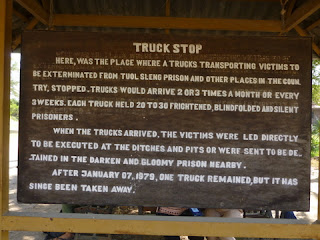



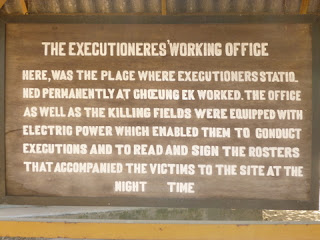





































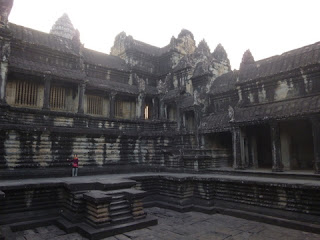







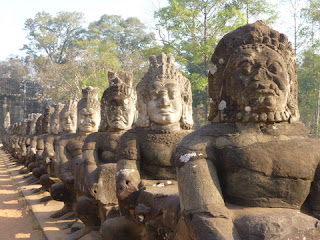





























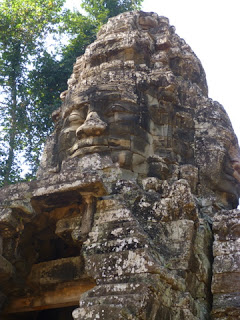







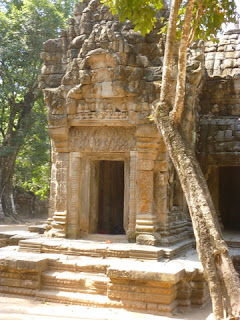





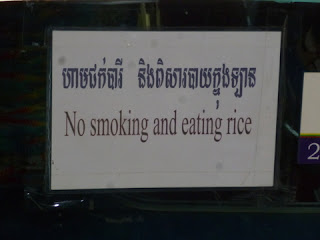







Thank you very much for sharing information that will be much helpful for making coursework my effective.
ReplyDeleteThank you very much for sharing information that will be much helpful for making coursework my effective.
ReplyDeleteobat aborsi
ReplyDeletejual obat aborsi
jual obat aborsi asli
obat aborsi asli
harga obat aborsi
cytotec asli
cytotec
obat cytotec
jual cytotec
obat aborsi cytotec di jakarta
obat aborsi cytotec di bandung
obat aborsi cytotec di medan
obat aborsi cytotec di bogor
obat aborsi cytotec di bekasi
obat aborsi cytotec di cirebon
obat aborsi cytotec di surabaya
obat aborsi cytotec di malang
obat aborsi cytotec di sidoarjo
obat aborsi cytotec di kediri
obat aborsi cytotec di magelang
obat aborsi cytotec di solo
obat aborsi cytotec di pekalongan
obat aborsi cytotec di semarang
obat aborsi cytotec di yogyakarta
obat aborsi cytotec di palembang
obat aborsi cytotec di manado
obat aborsi cytotec di palu
obat aborsi cytotec di padang
obat aborsi cytotec di samarinda
obat aborsi cytotec di ambon
obat aborsi cytotec di ntt
obat aborsi cytotec di lombok
obat aborsi cytotec di aceh
obat aborsi cytotec di balikpapan